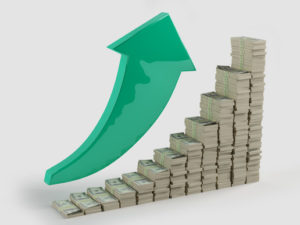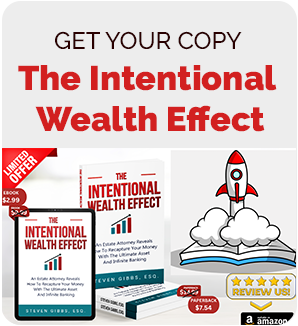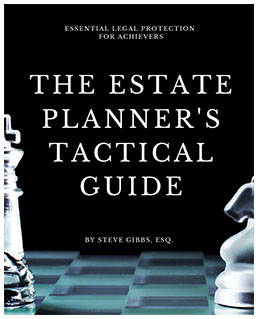When we part with our money, we usually do so with the expectation of getting a return on investment. Our expended money can be called our “investment.” Walk into a fast food restaurant and give them some money, in return you’ll be happy to get a rather quick return on your investment in the form of some “food.” The return came quickly, and was expected. If you go to the movie theater and invest in a couple tickets, you’ll hopefully be given a couple hours of entertainment as a return.
I know this isn’t how we normally think of investing, but the principle is sound. People rarely spend money without the expectation of some sort of return. Unfortunately, most people don’t adequately evaluate their returns, and as a result they may continue to invest in ways that don’t adequately suit their needs and desires.
Return on Investment Problem: How Most People Evaluate ROI
Ask the typical co-worker at the water cooler how he or she did with one of their investments and you’ll get a variety of responses. “Better than I expected.” “I should have sold when…” or even “I’m not really sure actually, but my advisor says we’re looking pretty good.”
The reality is that the many investors just open up their favorite portfolio monitoring software, and look at the current price/value. They usually know where it has been in the past, or they use the previous month or year to get a benchmark.
This method of evaluating returns is part of the problem today, and it contributes to the general lack of preparation for retirement in America and elsewhere.
It may not be obvious, but this method of evaluation ignores major factors in a return. In so doing, it can make the truth hard to see, or worse, it can give an individual a false sense of security. People are trying to save for retirement, looking at their portfolios weekly, or even daily in some cases.
And yet they may end up with far less than they anticipated after 10 years or more of slavishly checking up on their portfolio value. And this all happens because they aren’t taking some key factors into consideration.
The Best Evaluation of Investment Returns – Five Factors
- You need to consider the Time factor, because there is always an opportunity cost to parting with your money.
- You need to consider the Inflation factor, because the value of money does not stay the same from year to year.
- You need to calculate the Tax factor, because “there are only two guarantees in life, death, and taxes.”
- And of course you need to evaluate the Risk factor, because again, “there are only two guarantees in life…”
- And finally, the best financial evaluation of your investment return will need to consider the Cost factor, because “there’s no such thing as a free lunch.”
The Time Factor
What if I told you that I had purchased 100 ounces of gold for $19.39 per ounce. The total price for my 100 ounces of gold was only $1,939.00. Then I told you that I had just recently sold my 100 ounces of gold at the current price of $1,286 per ounce, for a grand total of $128,600.00.
A staggering ROI of just over 6,500%.
Should I be praised for my incredible investment return? Should people come to me for advice on how I managed to beat the odds?
But what if I told you that I purchased my gold in 1792, not long after our country declared it’s independence. Wouldn’t that change your perspective on my incredible return? My calculated annual rate of return would be just under 2%. All in all it’s not a very good return financially. Why?
It may seem obvious to us all, but the fact that my total time frame was 225 years in the above scenario, meant that the investment returned fairly poorly. In other words, the time factor is critical to all proper evaluations. You absolutely can not have a proper calculation on your return on investment without considering the factor of time.
The point here in this first factor is that you need to annualize your return. If you can’t break it down into a yearly return, you will have trouble comparing it with other opportunities that come your way. Not a math wizard? No problem. Just search for “annual rate of return calculator” in your favorite search engine. If you know the total number of years and the beginning and ending balance (value), you’ll be good to go.
The Inflation Factor
The Golden Gate Bridge was completed in 1937 and was built for around $35 million. Today, you could get one house overlooking the bridge at each end for about that much money. All that to say, the value of a dollar in 1935 is not the same as it is today. In fact, the value of the dollar in the bay area has plummeted since 1937. But what does it matter?
Inflation is the secret killer of our savings and our investments. If we don’t outpace inflation, we will end up with less and less purchasing power down the road. Currently most financial advisors and writers will estimate 3% annually over a long period of time.
In order to get a really good background on inflation and the most common used metric for measuring it, the Consumer Price Index (CPI), head on over to the http://www.usinflationcalculator.com. The website tracks the CPI monthly going all the way back to 1913, the year the Fed was created.
Using the monthly data, or even just using the average yearly data, you can measure your savings and investments against inflation. If you’re in the market I would recommend evaluating on a yearly basis at a minimum, unless there are major changes in the economy or markets, in which case it’s all hands on deck to make sure your money is in the right location.
If however, you are saving for retirement via alternative methods (Infinite Banking, Rental Property, Oil Wells, etc.) that may not be vulnerable to market swings, you may be able to evaluate your return against inflation less frequently.
The Tax Factor
The tax man cometh! For many participants in a 401k plan, the idea of paying taxes on their retirement is just a distant thought. They live each day as though the total amount of money they have in their growing portfolio is going to be theirs someday. Unfortunately, many will have to pay a significant percentage to Uncle Sam.
If you don’t take taxes into account when you evaluate your returns, you will likely be 20-30% off in your estimates. It’s true that some people will only end up paying 15% (under current tax law), but most people that have a decent portfolio (which is probably those that are reading this article), will end up paying 25-30%, or even more for those in the top income bracket.
DON’T FORGET TO FACTOR IN YOUR TAXES! Even a rough estimate of your tax situation in the future will help. But for those that want to really get the most out of their evaluation, make sure you take into consideration the Required Minimum Distribution (RMD) that happens when you turn 70 1/2 years of age. The RMD will force you to withdraw funds from your qualified plan, you’ll pay taxes on the distribution, and your account growth will be impacted by the withdrawal as well.
The goal of evaluating any savings, investment, or retirement solution is to be able to make changes and course corrections if necessary. So when when you compare your tax deferred strategy alongside a taxed strategy, or a tax free strategy, the tax implications must be considered in order to accurately determine which course of action makes the most sense.
The Risk Factor
Charles Blondin, the famous French tightrope walker, amazed and thrilled crowds when he became the first person to walk across Niagara Falls on a tightrope. In 1860 he walked back and forth across the falls doing various amazing things, one of which was pushing a wheelbarrow loaded with a sack of potatoes. After crossing the tightrope with the wheelbarrow and potatoes everyone cheered, and Charles then asked the people if they believed he could cross the tightrope with a person in the wheelbarrow. Everyone yelled “Yes! We believe you can!” Then Charles asked for a volunteer, and the crowd became silent.
It’s a famous story that is used to illustrate true faith vs. pseudo-faith. But here is why I bring it up. The risk factor for those Charles and any would-be volunteer is extremely high. They are either successful, or they are dead. There isn’t any middle of the road scenario.
If we assign some sort of return on investment (prize money) for jumping in the wheelbarrow and taking the trip across the falls, say $1,000 (which was a lot of money in 1860). It might be easy to assume that you would be foolish not to take advantage of the offer. You jump in the wheelbarrow, stay as motionless as possible for 5 minutes or so, and you have a healthy reward waiting for you on the other side. Ultimately, it would have easily been the fastest money anyone had every “earned” in that day and age. But what about the risk?
All or Nothing?
If you ignore the risk of plummeting to your watery death, the return may seem fantastic. But it’s an all or nothing investment. You jump in the wheelbarrow and risk your life, or you get nothing. Evaluating risk is important for any savings, investment, entrepreneurial, or retirement endeavor.
Typically there are a handful of ways to evaluate risk in a market environment, but most involve some measure of volatility. The reason for this is because there is a clear relationship between volatility and return over a long period of time. The greater the volatility, the greater the chance of reward and the greater the chance of loss. Here are the five most common measures of volatility:
- Standard Deviation – when someone mentions volatility, this is what comes to mind. This measures how widely the price of a given asset varies over a period of time.
- Beta – commonly used among those investing in the stock market. This measures the asset against a benchmark, often times the S&P 500. The market will be given a set beta of 1, and the other assets are compared to that benchmark and given a beta number based on the difference. An asset with a beta of 1.3 is assumed to be 30% more risky, and thus have the potential for 30% greater return in an up market (30% greater loss in a down market).
- Sharpe Ratio – William Sharpe came up with this in the 1960’s and simply put the ratio describes how much excess return you are receiving for the extra volatility that you endure for holding a riskier asset.
- Down Market – how does the asset perform when the economy is bad, or the market is down, or both?
- Largest Monthly Loss – self explanatory here. Look at the greatest monthly loss in a given month.
All these factors taken together can help determine risk. But ultimately you need to try and match the risk to your goals and and situation.
The Cost Factor
And finally we need to take into consideration the costs associated with any given asset. If you have a mutual fund, know the costs (all of them) associated with it. If you have a rental property, take into consideration depreciation of the physical property and the property tax you pay each year. Are you an infinite banker? Make sure you calculate the cost of insurance into your evaluation.
For those that are looking at their mutual fund, keep in mind that the expense ratio is actually only about 1/3 the cost to the owner. According to the Forbes article “The Real Cost of Owning a Mutual Fund” written in 2011, the cost for owning a mutual fund could be as high as 4% per year. This is part of the reason why so many people are flocking to ETF’s, because they can avoid some of the costs associated with these funds.
Regardless of the asset, you need to be aware of the total cost of ownership if you want to be able to evaluate your return correctly and accurately. If you own property, look at your tax statements and your management fees (if you have them). If you own mutual funds make sure you are familiar with the expense ratio, the transaction costs, cash drag, and tax cost. And if you own permanent life insurance, make sure you calculate your premium with the death benefit (the death benefit needs to be part of the calculation).
Wrap-Up
With all these factors taken into consideration; the time factor, the inflation factor, the tax factor, the risk factor, and the cost factor, the evaluation of a given asset can accurately be completed. Sit down with your computer and create a spreadsheet of all these factors for yourself. Most people tend to estimate in their own favor, so get accurate numbers and write them down. Once they’re all in the spreadsheet, you’ll be able to come back over and over again with small updates to keep it accurate.
It may seem like a lot of work and effort to get all this information, but it’s better to go through the trouble now, than to enter retirement 10 years later because your calculations were off. And it’s also true that the more volatile and risky your investment strategy, the more frequently you will want to evaluate your success.
True genius resides in the capacity for evaluation of uncertain, hazardous, and conflicting information. Winston Churchill
You may not feel like a genius, but with practice and patience you can develop an evaluation that is accurate and complete. Then it’s just up to you to set your goals and see how your assets are helping you achieve those goals. As always, if you need any help discussing these issues, we’d love to talk.







